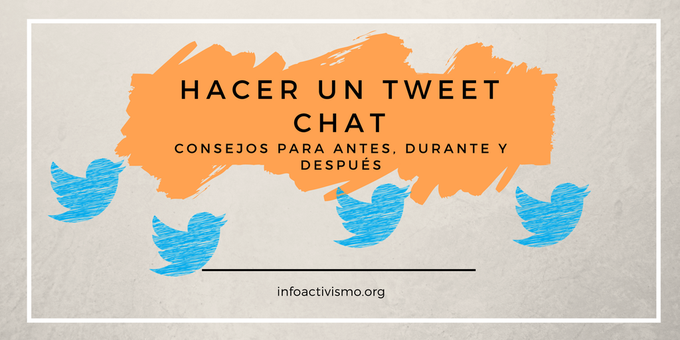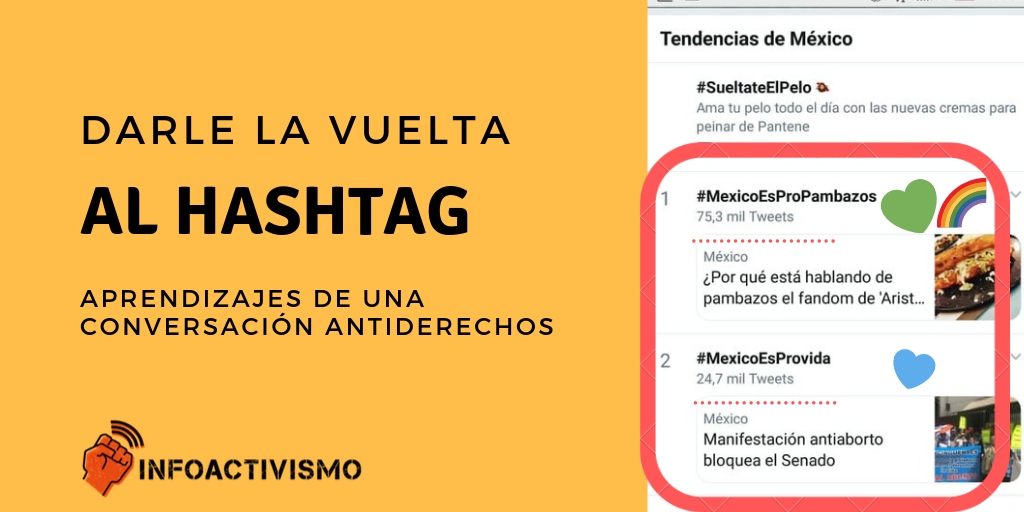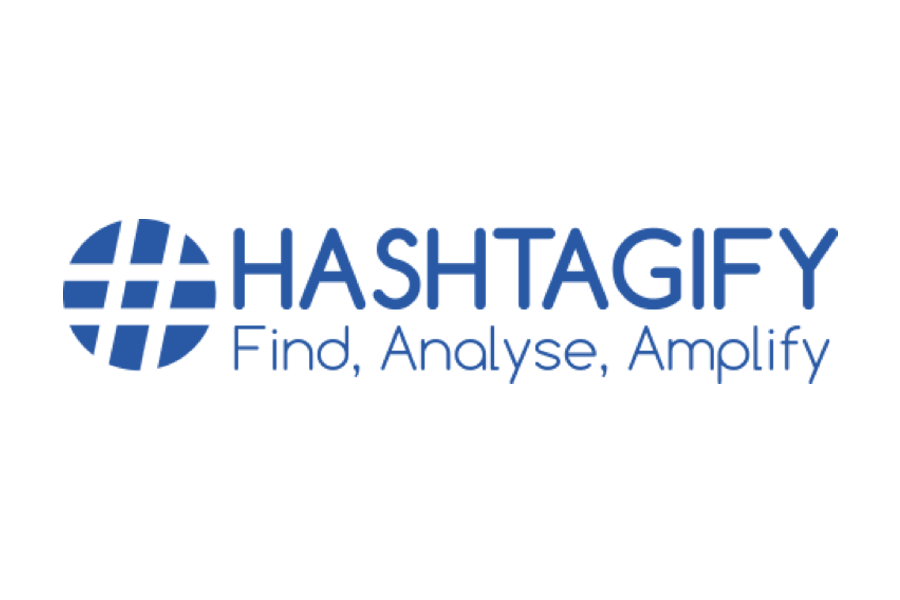Conversation Analysis During Times of Hate Speech

Published on: 14 January 2020
We have talked before about what we think are the steps to take when it comes to combating hate and discrimination online. But this time we want to delve deeper into a specific topic: conversation analysis.
Ideally, this analysis is carried out prior to any act of communication. In practice, this is not always the case, as we often come across campaigns that, apart from repeating the same old messages, have stopped listening to what their audiences think and feel about certain issues. For that reason, we believe that before anything else, we must focus on step zero:
0. Listen before talking
To carry out an effective campaign, the monitoring and analysis of conversations is essential, because it will help us understand the general dynamics of the conversation, while allowing us to clearly identify elements, characteristics and rhetorical resources we can use to plan some kind of intervention. In this case, we will focus on how to analyze conversations on Twitter.
This poses great opportunities, but also great challenges. The first is to understand that not everyone will want to talk about what we want to talk about and that a conversation is not just about talking, but also about listening. Having said that, let's get down to business.
1. How to start carrying out an analysis on Twitter
To start conducting an analysis, let's begin by proposing some key concepts to understand what we're trying to analyze.
Key concepts to understanding Twitter
Conversation: We can understand a twitter conversation as a set of messages, points of view, and narratives between different accounts (not necessarily people as such) around a particular topic. On Twitter, what we use to know what is being talked about are hashtags or keywords.
Hashtags or keywords: Hashtags and keywords are not exactly the same thing, but they are related to the extent that it is these words that the Twitter algorithm can turn into Trends, if it finds that there is a growing number of people using them to converse. In both cases, they are words that serve as a structuring element of a conversation and help us understand what the common theme is. In the past, Trends or Trending Topics could only be organized by driving tags (hashtag or HT) using the # character, while the algorithm can now trend one or more words. However, we must keep in mind that hashtags or keywords of a conversation are frequently related to others, giving rise to a kind of family of conversations.
Trending Topics: This is perhaps the most characteristic function of Twitter as a platform. If you want to know what people are talking about at a given place and time, just look at the list of terms that the platform considers as Trends (Trending Topics or TT), which will make it much easier for you to participate in conversations, because you will know which is the topic that the most people are interested in at a specific time.
Communities: Unlike other platforms where you can create more or less defined groups based on common interests, on Twitter communities are structured based on the words we use within the platform, not only when we tweet but also when we create our own Bio to describe ourselves. What is similar to other platforms is that your homepage is customized and determined by the accounts you choose to follow.
Opinion leaders: Although Twitter is a relatively horizontal and democratic platform, its design does not eliminate certain social dynamics that usually exist in the offline world. Profiles of politicians, journalists, communicators, artists and other "celebrities" outside the platform tend to attract much more attention than the average personal account. The same goes for organizations (remember, it isn't only people on Twitter).
Although in theory everyone can participate in equal conditions when we open our Twitter account, in practice there are dynamics inside and outside the platform that make people or organizations stand out either because of the number of followers or because they are given recognition as a verified account (to avoid being confused with fake or parody accounts). We can say that, on Twitter, everyone has the same opportunity to talk, but not everyone will be listened to equally.
A few key elements of a conversation
As we mentioned before, a conversation is analyzed based on several elements. Here are some of them:
Volume of the conversation: This is the total number of tweets that contain a certain tag or keyword(s). When a conversation starts to Trend, Twitter provides a rough estimate of how many tweets have recently been posted about it, ranging from a few thousand (3K-4K) to several hundred thousand (300K). Trending is not necessarily the same thing as having a large volume of conversation.
If the conversation you are interested in does not appear in the Trending Topics it is a little more difficult to have an estimate of how many tweets were published, but it is not impossible (check the tools section below).
Profile of participants: As soon as you get into the conversation, you can start exploring the participating profiles, see their user names, read their biographies, and see what else they tweet. By understanding more about the participating accounts, you will be able to understand a little more about the general dynamics of the conversation.
Opinion leaders: These are the accounts with the tweets that have the most interactions within a conversation, based on which it can be tentatively assumed that they are the predominant views in the conversation.
Milestones or specific moments: Since Twitter is a network where information is published and read very briefly and quickly, we must keep in mind that understanding the moment is essential. Trends not only exist because many people are talking about the same thing, but because they are talking about the same thing practically at the same time. So, we have to consider that a conversation always has a time frame which allows us to understand when it went from being a non-existent or marginal conversation to being something popular and even a Trend. In short, in order to analyze a conversation, it is not only a question of taking into consideration things such as the volume and the leading accounts, but also the time interval in which the conversation is taking place.
2. Assumptions for conversation analysis: planning vs. reaction
Although there are certainly more possible approaches to a conversation, we want to propose a simple classification that considers two possibilities: 1) a conversation is essentially planned; or 2) a conversation is primarily organic.
Planned conversation based on a specific moment or event
Define thematic lines and their related HTs. In this case the challenge is to identify what you want to achieve at the beginning of the conversation.
Suppose you want to draw attention to a more or less specialized subject and extend the conversation to people who are not so involved in it, but who might be interested. To do this, the question would be to find a way to amplify the conversation and make it accessible to new people. Here we have documented an example of this type of intervention: Make a Tweet chat

Tweetchat about Safe Internet
An intervention can be planned in a conversation about specific circumstances to explore a topic that is not clear, where information is often lacking. A clear example of this type of planned conversation (as a derivative of another planned conversation) is that of #WikipediaEnDebate, especially with respect to the question of Legal Abortion in Argentina. Basically, the conversation they had was coverage of the legislative debate in the Argentine Senate, but providing Wikipedia articles so that people on Twitter would have a better knowledge of the concepts and laws that were mentioned in the Senate.
Reactive conversation from an existing Trend or conversation
The other type of conversation that people or organizations decide to participate in arises from locating a certain hashtag or keyword in line with something in which we are interested in participating. In this case there are some complications because it is an ongoing conversation.
In order to analyze this type of conversation, besides identifying the elements of the conversation as we mention in the previous section, it is also convenient to analyze what still needs to be said, what doubts there may be, what is worth questioning or reflecting on, etc. It is also very important to be able to identify the general tone of the conversation and thus to be able to notice which emotions are present: anger, indignation, irony, laughter, enthusiasm.
Some spontaneous conversations like #RopaSucia (DirtyLaundry) (2015), #YoDenunciéY (ISpokeOutAnd) (2016), #SiMeMatan (IfTheyKillMe) (2017), #MeTooMx (MeTooMexico) (2018), are mainly about bringing visibility to people's personal testimonies or those of people close to them about specific experiences. #RopaSucia [2015]; #MiPrimerAcoso (MyFirstHarassment), #YoDenunciéY [2016]; #SiMeMatan [2017] and more recently #MeToo, #MeTooMx, #MeTooEscritoresMexicanos (MeTooMexicanWriters), #MeTooMusicosMexicanos (MeTooMexicanMusicians), #MeTooPeriodistasMexicanos (MeTooMexicanJournalists), etcetera.
In all these examples we can note that the common element is sharing testimonies of gender violence and, although the tone of the conversations varied considerably, we can see that all more or less have to do with speaking out.
Of course, the tone is not always one of indignation, protest or anger. We recently documented the case of #MexicoEsProPambazos in the post Cómo darle la vuelta a un hashtag antiderechos (How to turn an anti-rights hashtag around), where besides analyzing the most relevant tweets to identify the leaders in the conversation (this is how we discovered how the meaning of the original hashtag was turned around, and with what kind of tone and messages), we took the opportunity to mention some bad communicational practices by the "pro-life" cause, with the hope that the pro-human rights causes would avoid making this kind of mistake.

How to turn aournd an anti-rights hashtag: what we learned from #MéxicoEsProvida (MexicoIs ProLife)
3. A few tools you can try, to carry out an analysis
In order to delve further into the practice of analysis prior to intervening in conversations (expect a future post with recommendations on how to intervene in a conversation, after carrying out an analysis), we leave you with a brief list of tools that you can keep in mind if you want to really get involved in conversation analysis on Twitter:
TweetDeck
This tool not only helps to schedule the publication of content, but will also help you monitor conversations and apply different filters to identify which tweets have had the most interaction, track specific profiles or conversations, as well as use sophisticated search commands. For the latter, click on Settings > Search tips and you will find a very useful list of search commands for Twitter:

Hashtagify

This search engine is used to locate clouds of related hashtags, an essential exercise if you want to locate a family of related conversations.

Similar tools are Followerwonk (for this tool we have a brief guide to analyze your audience), Hashtracking, and Followthehashtag, which ask you to register and offer some free features.
Tools outside of Twitter
Ideally, this analysis is carried out prior to any act of communication. In practice, this is not always the case, as we often come across campaigns that, apart from repeating the same old messages, have stopped listening to what their audiences think and feel about certain issues. For that reason, we believe that before anything else, we must focus on step zero:
0. Listen before talking
To carry out an effective campaign, the monitoring and analysis of conversations is essential, because it will help us understand the general dynamics of the conversation, while allowing us to clearly identify elements, characteristics and rhetorical resources we can use to plan some kind of intervention. In this case, we will focus on how to analyze conversations on Twitter.
This poses great opportunities, but also great challenges. The first is to understand that not everyone will want to talk about what we want to talk about and that a conversation is not just about talking, but also about listening. Having said that, let's get down to business.
1. How to start carrying out an analysis on Twitter
To start conducting an analysis, let's begin by proposing some key concepts to understand what we're trying to analyze.
Key concepts to understanding Twitter
Conversation: We can understand a twitter conversation as a set of messages, points of view, and narratives between different accounts (not necessarily people as such) around a particular topic. On Twitter, what we use to know what is being talked about are hashtags or keywords.
Hashtags or keywords: Hashtags and keywords are not exactly the same thing, but they are related to the extent that it is these words that the Twitter algorithm can turn into Trends, if it finds that there is a growing number of people using them to converse. In both cases, they are words that serve as a structuring element of a conversation and help us understand what the common theme is. In the past, Trends or Trending Topics could only be organized by driving tags (hashtag or HT) using the # character, while the algorithm can now trend one or more words. However, we must keep in mind that hashtags or keywords of a conversation are frequently related to others, giving rise to a kind of family of conversations.
Trending Topics: This is perhaps the most characteristic function of Twitter as a platform. If you want to know what people are talking about at a given place and time, just look at the list of terms that the platform considers as Trends (Trending Topics or TT), which will make it much easier for you to participate in conversations, because you will know which is the topic that the most people are interested in at a specific time.
Communities: Unlike other platforms where you can create more or less defined groups based on common interests, on Twitter communities are structured based on the words we use within the platform, not only when we tweet but also when we create our own Bio to describe ourselves. What is similar to other platforms is that your homepage is customized and determined by the accounts you choose to follow.
Opinion leaders: Although Twitter is a relatively horizontal and democratic platform, its design does not eliminate certain social dynamics that usually exist in the offline world. Profiles of politicians, journalists, communicators, artists and other "celebrities" outside the platform tend to attract much more attention than the average personal account. The same goes for organizations (remember, it isn't only people on Twitter).
Although in theory everyone can participate in equal conditions when we open our Twitter account, in practice there are dynamics inside and outside the platform that make people or organizations stand out either because of the number of followers or because they are given recognition as a verified account (to avoid being confused with fake or parody accounts). We can say that, on Twitter, everyone has the same opportunity to talk, but not everyone will be listened to equally.
A few key elements of a conversation
As we mentioned before, a conversation is analyzed based on several elements. Here are some of them:
Volume of the conversation: This is the total number of tweets that contain a certain tag or keyword(s). When a conversation starts to Trend, Twitter provides a rough estimate of how many tweets have recently been posted about it, ranging from a few thousand (3K-4K) to several hundred thousand (300K). Trending is not necessarily the same thing as having a large volume of conversation.
If the conversation you are interested in does not appear in the Trending Topics it is a little more difficult to have an estimate of how many tweets were published, but it is not impossible (check the tools section below).
Profile of participants: As soon as you get into the conversation, you can start exploring the participating profiles, see their user names, read their biographies, and see what else they tweet. By understanding more about the participating accounts, you will be able to understand a little more about the general dynamics of the conversation.
Opinion leaders: These are the accounts with the tweets that have the most interactions within a conversation, based on which it can be tentatively assumed that they are the predominant views in the conversation.
Milestones or specific moments: Since Twitter is a network where information is published and read very briefly and quickly, we must keep in mind that understanding the moment is essential. Trends not only exist because many people are talking about the same thing, but because they are talking about the same thing practically at the same time. So, we have to consider that a conversation always has a time frame which allows us to understand when it went from being a non-existent or marginal conversation to being something popular and even a Trend. In short, in order to analyze a conversation, it is not only a question of taking into consideration things such as the volume and the leading accounts, but also the time interval in which the conversation is taking place.
2. Assumptions for conversation analysis: planning vs. reaction
Although there are certainly more possible approaches to a conversation, we want to propose a simple classification that considers two possibilities: 1) a conversation is essentially planned; or 2) a conversation is primarily organic.
Planned conversation based on a specific moment or event
Define thematic lines and their related HTs. In this case the challenge is to identify what you want to achieve at the beginning of the conversation.
Suppose you want to draw attention to a more or less specialized subject and extend the conversation to people who are not so involved in it, but who might be interested. To do this, the question would be to find a way to amplify the conversation and make it accessible to new people. Here we have documented an example of this type of intervention: Make a Tweet chat

Tweetchat about Safe Internet
An intervention can be planned in a conversation about specific circumstances to explore a topic that is not clear, where information is often lacking. A clear example of this type of planned conversation (as a derivative of another planned conversation) is that of #WikipediaEnDebate, especially with respect to the question of Legal Abortion in Argentina. Basically, the conversation they had was coverage of the legislative debate in the Argentine Senate, but providing Wikipedia articles so that people on Twitter would have a better knowledge of the concepts and laws that were mentioned in the Senate.
Reactive conversation from an existing Trend or conversation
The other type of conversation that people or organizations decide to participate in arises from locating a certain hashtag or keyword in line with something in which we are interested in participating. In this case there are some complications because it is an ongoing conversation.
In order to analyze this type of conversation, besides identifying the elements of the conversation as we mention in the previous section, it is also convenient to analyze what still needs to be said, what doubts there may be, what is worth questioning or reflecting on, etc. It is also very important to be able to identify the general tone of the conversation and thus to be able to notice which emotions are present: anger, indignation, irony, laughter, enthusiasm.
Some spontaneous conversations like #RopaSucia (DirtyLaundry) (2015), #YoDenunciéY (ISpokeOutAnd) (2016), #SiMeMatan (IfTheyKillMe) (2017), #MeTooMx (MeTooMexico) (2018), are mainly about bringing visibility to people's personal testimonies or those of people close to them about specific experiences. #RopaSucia [2015]; #MiPrimerAcoso (MyFirstHarassment), #YoDenunciéY [2016]; #SiMeMatan [2017] and more recently #MeToo, #MeTooMx, #MeTooEscritoresMexicanos (MeTooMexicanWriters), #MeTooMusicosMexicanos (MeTooMexicanMusicians), #MeTooPeriodistasMexicanos (MeTooMexicanJournalists), etcetera.
In all these examples we can note that the common element is sharing testimonies of gender violence and, although the tone of the conversations varied considerably, we can see that all more or less have to do with speaking out.
Of course, the tone is not always one of indignation, protest or anger. We recently documented the case of #MexicoEsProPambazos in the post Cómo darle la vuelta a un hashtag antiderechos (How to turn an anti-rights hashtag around), where besides analyzing the most relevant tweets to identify the leaders in the conversation (this is how we discovered how the meaning of the original hashtag was turned around, and with what kind of tone and messages), we took the opportunity to mention some bad communicational practices by the "pro-life" cause, with the hope that the pro-human rights causes would avoid making this kind of mistake.

How to turn aournd an anti-rights hashtag: what we learned from #MéxicoEsProvida (MexicoIs ProLife)
3. A few tools you can try, to carry out an analysis
In order to delve further into the practice of analysis prior to intervening in conversations (expect a future post with recommendations on how to intervene in a conversation, after carrying out an analysis), we leave you with a brief list of tools that you can keep in mind if you want to really get involved in conversation analysis on Twitter:
TweetDeck
This tool not only helps to schedule the publication of content, but will also help you monitor conversations and apply different filters to identify which tweets have had the most interaction, track specific profiles or conversations, as well as use sophisticated search commands. For the latter, click on Settings > Search tips and you will find a very useful list of search commands for Twitter:

Hashtagify

This search engine is used to locate clouds of related hashtags, an essential exercise if you want to locate a family of related conversations.

Similar tools are Followerwonk (for this tool we have a brief guide to analyze your audience), Hashtracking, and Followthehashtag, which ask you to register and offer some free features.
Tools outside of Twitter
- Google Trends: to locate Milestones or peaks of a conversation over time.
- Media Cloud for monitoring media coverage around a topic.
- Google Alerts: to be on the lookout for a conversation that interests you.
- Integromat: an alternative to IFTTT (which hasn't been working for a while) to collect and store the conversation in an automated fashion, connecting Twitter with Google Spreadsheet.
Originally published by Infoactivismo: https://infoactivismo.org/analisis-de-conversacion-en-tiempos-de-discursos-de-odio/
- Log in to post comments
